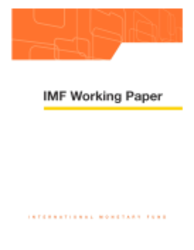
Exchange Rate Regime Transitions
The "hollowing-out," or "two poles" hypothesis is tested in the context of a Markov chain model of exchange rate transitions. In particular, two versions of the hypothesis-that hard pegs are an absorbing state, or that fixes and floats form a closed set, with no transitions to intermediate regimes-are tested using two alternative classifications of regimes. While there is some support for the lack of exits from hard pegs (i.e., that they are an absorbing state), the data generally indicate that the intermediate cases will continue to constitute a sizable proportion of actual exchange rate regimes.
Publication date: July 2000
ISBN: 9781451855593
$15.00
Add to Cart by clicking price of the language and format you'd like to purchase
Available Languages and Formats
| English |
Prices in red indicate formats that are not yet available but are forthcoming.
Topics covered in this book
This title contains information about the following subjects.
Click on a subject if you would like to see other titles with the same subjects.
Money and Monetary Policy , Money and Monetary Policy , exchange rates , regimes , pegs , floating , exchange rate , probability , probabilities
Also of interest
Summary
Copyright © 2010 - 2026
Powered by:
AIDC



